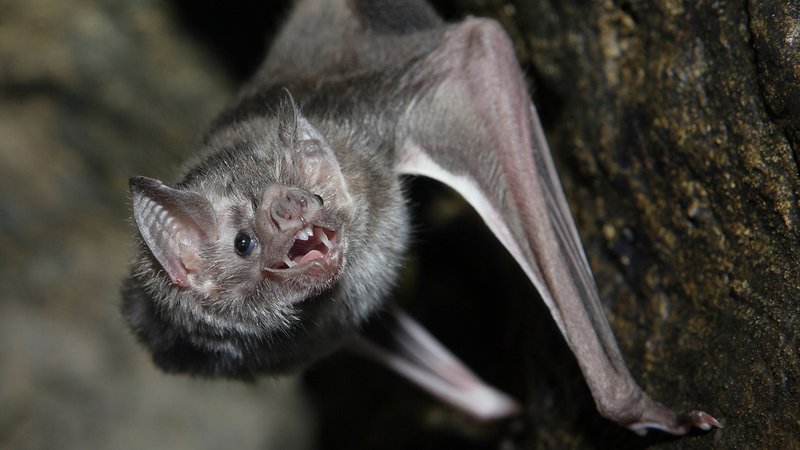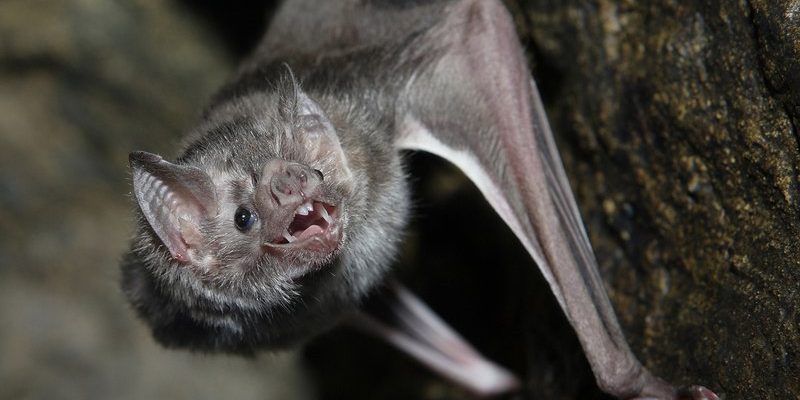
When you think of bats, your mind might conjure up images of spooky Halloween décor or the eerie fluttering sound of wings in the night. Among the many species of bats, the Vampire Bat stands out—not just for its name but also for its unique lifestyle. Unlike the majority of bats that feast on fruit or insects, the Vampire Bat has a rather *daring* diet, primarily feeding on the blood of animals. It’s definitely one of nature’s more curious creatures!
Vampire Bats have a reputation that precedes them, often depicted in films and folklore as terrifying bloodsuckers. However, the reality is that these bats are more fascinating than frightening. They are social animals with interesting behaviors and adaptations that allow them to thrive in a variety of environments. So, what makes these bats tick? Let’s delve a little deeper into their world.
What is a Vampire Bat?
The Vampire Bat is a small bat species found in the Americas, primarily in regions like Mexico and South America. There are three main species: the Common Vampire Bat, the Hairy-Legged Vampire Bat, and the White-Winged Vampire Bat. Each of these species has unique traits, but they all share the infamous trait of hematophagy—the technical term for blood-feeding.
Interestingly, Vampire Bats have evolved specific features that enable them to find and consume blood. Their specialized heat sensors help them locate blood vessels near the surface of their prey’s skin. And while it sounds gruesome, the actual act of feeding is quite controlled. Vampire Bats make small incisions in their host’s skin and then lap up the blood, often without the host even noticing.
While they may seem intimidating, it’s important to remember that Vampire Bats play a role in their ecosystem. Their feeding habits can help control certain animal populations and contribute to nutrient cycling in their habitats.
Physical Characteristics
Vampire Bats are relatively small compared to other bat species. On average, they weigh around 2 ounces and have a wingspan of about 7 to 8 inches. With their brown fur and distinctive facial features, they are often quite cute in their own way! Their elongated snouts and sharp fangs make them easily recognizable.
Their teeth are specifically designed for their feeding habits. Unlike typical mammals, Vampire Bats do not have molars; instead, they possess sharp incisors perfect for making tiny cuts in the skin of their prey. Additionally, they have a keen sense of hearing and sight, making them effective nocturnal hunters.
One interesting feature is their adaptability to different habitats. Vampire Bats can be found in varied environments, from tropical rainforests to dry shrublands. This versatility helps them thrive, as they can find food and shelter in many places.
Feeding Habits
The Vampire Bat’s diet is primarily composed of the blood of warm-blooded animals, and they generally prey on livestock like cattle or horses. They are not aggressive hunters; rather, they wait patiently for their unsuspecting prey to settle down for a nap. This waiting game can last for hours, as they are particularly skilled at remaining undetected.
You might wonder how these bats manage to feed without causing harm to their hosts. The answer lies in their saliva, which contains anticoagulants that prevent the blood from clotting. This enables them to feed for around 30 minutes at a time—a rather *efficient* way to take what they need without alarming their source of sustenance.
After feeding, Vampire Bats often return to their roosts, where they may share their meal with fellow bats, a behavior known as “food sharing.” This is more than just a friendly gesture; it helps ensure that all bats in the colony can access food, especially during times when blood meals are scarce.
Habitat and Range
Vampire Bats are predominantly found in the tropical and subtropical regions of the Americas. They thrive in places like Central and South America, from Mexico down to Argentina. Their favorite haunts are often near livestock farms, where they have easier access to their preferred food source.
When it comes to roosting, these bats prefer dark, secluded areas, which can include caves, hollow trees, or even buildings. Their roosting spots provide safety and a sheltered environment where they can rest during the day. It’s fascinating to note that some colonies can number in the hundreds, creating a real social hub for these unique creatures.
Interestingly, their habitat plays a critical role in their survival. The availability of hosts, such as cows and horses, directly affects their population. As human activities change landscapes—like deforestation or agriculture—they can impact the number of Vampire Bats in an area, sometimes leading to conflicts with livestock owners.
Behavior and Social Structure
Vampire Bats are highly social creatures, often forming colonies that can range from a few individuals to several hundred. They communicate through a variety of vocalizations and body language, showcasing a surprisingly sophisticated social system. When one bat finds a good source of blood, it may use “calls” to alert others in the colony to join.
Beyond just sharing meals, these bats exhibit behaviors that create deep social bonds. They can recognize each other’s faces and even exhibit altruism by sharing food with those who may not have had a successful feeding. This sharing mechanism is crucial for their survival during lean times.
You might be surprised to know that Vampire Bats also engage in grooming behaviors, which further solidifies their social ties. Grooming not only helps keep their fur clean but also strengthens the relationships between bats, making them a *tight-knit* community.
Reproduction and Lifespan
Vampire Bats have a relatively slow reproductive rate. Female Vampire Bats usually give birth to just one pup each year, and the young bats are dependent on their mothers for several months. During this time, the mother will nurse her pup and ensure it learns the skills necessary for hunting blood.
The pups start becoming independent around 3 months old, but it can take them up to a year to become proficient at feeding themselves. Interestingly, the bonds made between mothers and pups are very strong, and the mother will often share her food with her young offspring, ensuring they grow strong.
In terms of lifespan, Vampire Bats can live up to 9 years in the wild, although many face threats from predators or loss of habitat. In captivity, they may live longer due to the absence of these environmental pressures and the availability of consistent food sources.
Conservation Status
Currently, Vampire Bats are not considered endangered, but they face challenges due to habitat destruction and human-wildlife conflict. As agriculture expands and deforestation continues, their natural habitats are being compromised. Additionally, misinterpretations and fear surrounding their blood-feeding habits can lead to unnecessary persecution, affecting their populations.
Efforts are being made to educate communities about the ecological role of Vampire Bats. By fostering a better understanding of these fascinating creatures, conservationists hope to improve the coexistence between humans and vampire bats, allowing them to thrive while still respecting livestock interests.
It’s essential that we recognize the importance of all animals in our ecosystems, regardless of how *unconventional* their habits may seem. Vampire Bats, like many other species, play a unique role in nutrient cycling and can be crucial for maintaining healthy ecosystems.
Interesting Facts
| Fact | Details |
| Diet | Primarily feeds on the blood of mammals. |
| Habitat | Common in tropical and subtropical regions of the Americas. |
| Weight | Typically around 2 ounces. |
| Wingspan | About 7 to 8 inches. |
| Lifespan | Can live up to 9 years in the wild. |
FAQ
Are Vampire Bats dangerous to humans?
Vampire Bats are rarely a threat to humans. Their preferred prey are typically livestock, and they usually feed on animals that are asleep. While their feeding mechanism can seem scary, it is very unlikely for them to target humans unless they are provoked or feel threatened.
How do Vampire Bats find their prey?
Vampire Bats have specialized heat sensors in their noses that help them locate blood vessels close to the skin of their prey. They also use their keen sense of hearing to detect the heartbeat of animals nearby, assisting them in their hunting efforts.
Can Vampire Bats transmit diseases?
While Vampire Bats can carry diseases, they are not major transmitters to humans. However, they can transmit rabies to livestock, which poses a concern in agriculture. Thankfully, bites are rare and the risk of transmission to humans is very low.
Do Vampire Bats have any predators?
Yes, Vampire Bats face threats from several predators, including hawks, owls, and snakes. These predators can often detect bats while they are roosting or feeding, and it’s essential for Vampire Bats to stay vigilant to avoid becoming a meal themselves.
How do Vampire Bats survive in the wild?
Vampire Bats have adapted well to their environment. They usually roost in groups, which offers safety in numbers, and they are skilled at navigating through dense vegetation and dark spaces. Their social structure also plays a crucial role in ensuring survival, with bats sharing food and information about good feeding spots.
What is the role of Vampire Bats in the ecosystem?
Vampire Bats play an important role in their ecosystems through their feeding habits. By consuming the blood of larger mammals, they can help control animal populations in a way that promotes a healthy balance. Moreover, their waste products contribute nutrients back to the soil, aiding plant growth in their habitats.
How do Vampire Bats communicate?
Vampire Bats use a series of vocalizations to communicate with one another, especially when signaling the discovery of a food source. They also engage in grooming behaviors, which further solidifies social bonds within the colony.
What do Vampire Bats do when food is scarce?
During times of food scarcity, Vampire Bats exhibit altruistic behavior by sharing meals with one another. They may regurgitate blood they have consumed to feed bats that haven’t been as lucky while hunting, ensuring the survival of their social group.
Can Vampire Bats fly long distances?
While Vampire Bats can fly, they prefer to stay close to their roosts and feeding grounds. They usually travel short distances of less than 10 miles in search of food, as they hunt within familiar territories where they know where to find their prey.
What is the conservation status of Vampire Bats?
Vampire Bats are currently not considered endangered. However, habitat destruction and human-wildlife conflict pose threats to their populations. Conservation efforts focus on educating communities and promoting coexistence with these fascinating creatures.

